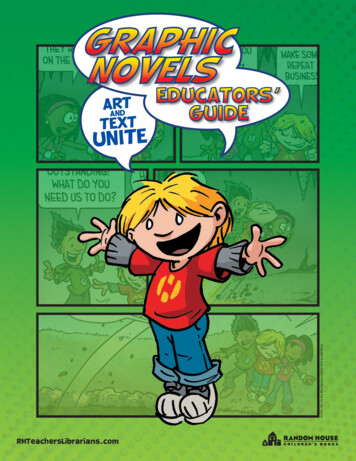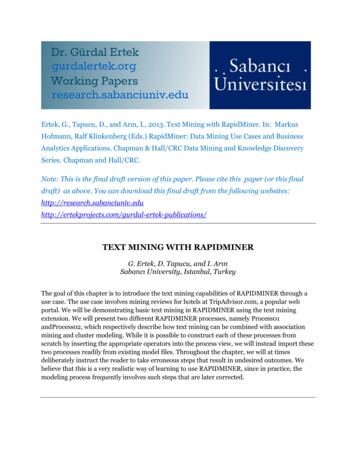
Transcription
EASY – PLAIN – ACCESSIBLESilvia Hansen-Schirra / Christiane Maaß (eds.)Easy Language Research:Text and User Perspectives
Silvia Hansen-Schirra / Christiane Maaß (eds.)Easy Language Research: Text and User Perspectives
Silvia Hansen-Schirra / Christiane Maaß (eds.)Easy – Plain – AccessibleVol. 2
Silvia Hansen-Schirra / Christiane Maaß (eds.):Easy Language Research:Text and User PerspectivesVerlag für wissenschaftliche Literatur
CC-BY-NC-NDISBN Print 978-3-7329-0688-8ISBN E-Book 978-3-7329-9302-4ISBN Open Access 978-3-7329-9267-6ISSN 2699-1683DOI 10.26530/20.500.12657/42088 Frank & Timme GmbH Verlag für wissenschaftliche LiteraturBerlin 2020. Alle Rechte vorbehalten.Das Werk einschließlich aller Teile ist urheberrechtlich geschützt.Jede Verwertung außerhalb der engen Grenzen des Urheberrechtsgesetzes ist ohne Zustimmung des Verlags unzulässig und strafbar.Das gilt insbesondere für Vervielfältigungen, Übersetzungen,Mikroverfilmungen und die Einspeicherung und Verarbeitung inelektronischen Systemen.Herstellung durch Frank & Timme GmbH,Wittelsbacherstraße 27a, 10707 Berlin.Printed in Germany.Gedruckt auf säurefreiem, alterungsbeständigem Papier.www.frank-timme.de
Table of ContentsP ART 1: S ETTING THE S TAGES ILVIA H ANSEN -S CHIRRA , C HRISTIANE M AAßIntroduction .9S ILVIA H ANSEN -S CHIRRA , C HRISTIANE M AAßEasy Language, Plain Language, Easy Language Plus:Perspectives on Comprehensibility and Stigmatisation .17P ART 2: E XPERT T EXTS AND T RANSLATION INTO E ASY L ANGUAGEC HRISTIANE M AAß , I SABEL R INKScenarios for Easy Language Translation:How to Produce Accessible Content for Users with Diverse Needs .41L ORAINE K ELLERPeople with Cognitive Disabilities and their Difficultieswith Specialised Interactive Texts .57S ARAH A HRENSEasy Language and Administrative Texts:Second Language Learners as a Target Group .67S ILVIA H ANSEN -S CHIRRA , J EAN N ITZKE ,S ILKE G UTERMUTH , C HRISTIANE M AAß , I SABEL R INKTechnologies for the Translation of Specialised Texts into Easy Language .99P ART 3: M ULTIMODAL AND M ULTICODAL E ASY L ANGUAGE T EXTSC HRISTIANE M AAß , S ERGIO H ERNÁNDEZ G ARRIDOEasy and Plain Language in Audiovisual Translation .131 Frank & TimmeVerlag für wissenschaftliche Literatur5
Table of ContentsR EBECCA S CHULZ , J ULIA D EGENHARDT ,K IRSTEN C ZERNER -N ICOLASEasy Language Interpreting . 163J ANINA K RÖGERCommunication Barriers and Cultural Participation:A Visit to a Wildlife Park as a Multicodal Accessible Text . 179P ART 4: C OGNITIVE P ROCESSING OF E ASY L ANGUAGES ILVIA H ANSEN -S CHIRRA , W ALTER B ISANG , A RNE N AGELS ,S ILKE G UTERMUTH , J ULIA F UCHS , L IV B ORGHARDT , S ILVANA D EILEN ,A NNE -K ATHRIN G ROS , L AURA S CHIFFL , J OHANNA S OMMERIntralingual Translation into Easy Language –Or how to Reduce Cognitive Processing Costs. 197L AURA S CHIFFLHierarchies in Lexical Complexity: Do Effects of Word Frequency,Word Length and Repetition Exist for the Visual Word Processing of Peoplewith Cognitive Impairments? . 227S ILVANA D EILENVisual Segmentation of Compounds in Easy Language:Eye Movement Studies on the Effects of Visual, Morphological andSemantic Factors on the Processing of German Noun-Noun Compounds . 241J OHANNA S OMMERA Study of Negation in German Easy Language – Does TypographicMarking of Negation Words Cause Differences in Processing Negation? . 257S ILVANA D EILEN , L AURA S CHIFFLUsing Eye-Tracking to Evaluate Language Processingin the Easy Language Target Group . 273On the Authors .2836 Frank & TimmeVerlag für wissenschaftliche Literatur
P A R T 1:SETTING THE STAGE
S ILVIA H ANSEN -S CHIRRA , C HRISTIANE M AAßIntroductionIn recent years, Easy Language research has gained traction in Germany. Thisresearch is fueled by new legislations based on international regulations andguidelines such as the UN Convention on the Rights of People with Disabilities (UN CRPD) or the Directive EU 2016/2102 that are currently being implemented. Easy Language strives to include people with communication impairments into the information society and to grant them full access to contentin all fields of society and all aspects of life. While the topic was originallydriven by the agenda of empowerment groups and social welfare institutionsand activists, who also provided the first practical rulesets, it became increasingly evident that achieving comprehensibility was not as straightforward asoriginally assumed: Intuitively drafted guidelines present rules on word, sentence and text levels that contradict and neutralise each other while the textscreated on this basis have unsatisfactory comprehensibility and/or acceptability scores. Research is needed to shed light on how comprehension, recall andaction orientation of the primary target groups can be enhanced through textsmodelled according to their needs. The pertinent set of research questions isbasically threefold: Text perspective: Thanks to Maaß (2015) and Bredel/Maaß (2016a–c),we have a scientifically based rule set for Easy Language (for an overview, cf. Maaß 2020). What is required now is research on text typedesign including expert texts of the different domains as well as multimodal, multicodal and multimedia renderings of content. User perspective: Hansen-Schirra/Gutermuth (2018, 2019) and Gutermuth (2020) provide first assumptions on comprehension and recall of the primary target groups with respect to Easy Language texts.The next step is comprehensive research on perception, comprehension, recall, acceptance and action orientation of Easy Language textsfrom the perspective of the primary target groups. Frank & TimmeVerlag für wissenschaftliche Literatur9
Silvia Hansen-Schirra, Christiane Maaß Translation perspective: Based on Rink (2020) and Maaß (2019), wehave an outline of problems and scenarios of Easy Language translation. Easy Language constitutes a challenge for translators in variousrespects: They have to master the discrepancy between the complexityof content in expert communication and the inventory restrictions ofEasy Language; the question of how the available tools for interlingualtranslation (terminology management, translation memory, machinetranslation) can be adapted or created for Easy Language translationmust also be considered.The present volume provides insights into current projects of two Easy Language research groups at the universities of Hildesheim and Mainz/Germersheim. The two groups have complementary profiles and unite approaches ontexts, users and translation. The groundwork for linguistically modelling EasyLanguage as a variety was laid in Hildesheim (Bredel/Lang/Maaß 2016),where scientific guidelines for Easy Language were established (Maaß 2015and Bredel/Maaß 2016 a–c). There, the Research Centre for Easy he) conducts theoretical researchand application-oriented research into Easy and Plain Language and is inclose contact with the target groups. The research group “Simply complex –Easy Language” -eng/)in Mainz/Germersheim has adopted methods from cognitive science for theassessment of EL modelling and rules with the respective target groups of EL(Hansen-Schirra/Gutermuth 2018, 2019, Gutermuth 2020). Using methodssuch as eyetracking, EEG and fMRT, they focus on quantitative-empiricalreception research. This PhD research group is funded by the GutenbergCouncil for Young Researchers (GYR). These two groups in Hildesheim andMainz/Germersheim currently constitute the highest concentration of researchresources dedicated to EL and accessible communication in the Germanspeaking world.The current volume presents first research findings on Easy Language ofthe two groups, focusing on perspectives on text types, target groups andtranslation processes.The volume starts with the section Setting the Stage that lays out the field ofcomprehensibility enhanced varieties at different levels. The introduction is10 Frank & TimmeVerlag für wissenschaftliche Literatur
Introductionfollowed by a contribution by the editors, Silvia Hansen-Schirra and Christiane Maaß: Titled Easy Language, Plain Language, Easy Language Plus: Perspectives on Comprehensibility and Stigmatisation, it highlights unresolved researchquestions and proposes the concept of Easy Language (EL ) as a possiblesolution to the dilemmatic relation between comprehensibility and perceptibility on the one hand, and acceptability and stigmatisation on the other.The next section is dedicated to Expert Texts and Translation into Easy Language. Christiane Maaß and Isabel Rink outline Scenarios for Easy LanguageTranslation and ask the question How to Produce Accessible Content for Userswith Diverse Needs. Easy Language translation, especially of expert communication, requires major interventions on the text level with translations oftenoscillating between different scenarios: Scenario A in which the target textscontain more or less the same information as the source texts, but are excessively long because of the need to insert explanations of central concepts. Scenario B in which the target texts are reduced to amounts of information thatare processable by the primary target groups but lack important parts of thesource text content. The paper proposes translation strategies to approach anideal Scenario C that comprises accessible texts with a balanced amount ofinformation.The next contribution combines text and user perspective; in her paperPeople with Cognitive Disabilities and their Difficulties with Specialised Interactive Texts, Loraine Keller reports on a research project she carried out with agroup of people with cognitive disabilities: She asked them to read and discusssource texts from the field of administrative communication in an attempt toidentify the types of encountered difficulties. This is a first necessary step toindividuate possible problems that Easy Language target texts have to providesolutions for.Sarah Ahrens focusses on a different primary Easy Language target group:Migrants that face interactive texts in legal and administrative communication.In her paper Easy Language and Administrative Texts: Second Language Learners as a Target Group, she shows what qualities make the source text so difficultfor the participants to comprehend and act according to the requirements ofthe situation. She points to the discrepancy between text qualities and masteryof language expected from the target group at the precise moment they areusually confronted with this concrete sample of administrative communication Frank & TimmeVerlag für wissenschaftliche Literatur11
Silvia Hansen-Schirra, Christiane Maaßand draws conclusions for the possible use of Easy Language to enable unassisted participation and exercising of own rights.The last paper of the first section joins the perspectives of the two researchgroups: Silvia Hansen-Schirra, Jean Nitzke, Silke Gutermuth, ChristianeMaaß and Isabel Rink present insights on Technologies for the Translation ofSpecialised Texts into Easy Language. They discuss how tools and technologiesthat are standard in interlingual translation can be transferred to the EasyLanguage translation of expert texts.The second section of the volume, Multimodal and Multicodal Easy Language Texts, is dedicated to different forms of media qualities that Easy Language texts have or should have. So far, the focus has been on printed materials, while texts of very different mediality are required if inclusion in all aspects of life is to be achieved. The nature of their communicative impairmentimplies that the target groups have special needs with regard to the differentmedia realisations, but that these may also incur possible solutions.Audiovisual translation has seen a unique increase in practice as well as inresearch; the combination of the different forms of audiovisual translationswith Easy and Plain Language, however, has largely been neglected. The international EASIT (Easy Access to Social Inclusion Training) project is situated atthe intersection of these domains. Christiane Maaß and Sergio HernándezGarrido provide an outline on Easy and Plain Language in Audiovisual Translation; they present the EASIT project, describe the conditions that enable anddelimit EL and PL in AV translation and develop a schematic overview of thepossible different combinations.Easy Language has not only become established in written, pre-plannedcommunication, which is the domain of translation, but is increasingly used inoral, spontaneous interaction, i.e. the domain of interpreting. In Germany, wecan observe the development of an increased market demand for Easy Language interpreting, especially for events in the cultural domain, in inclusiveconferences or in court. Rebecca Schulz, Julia Degenhardt and KirstenCzerner-Nicolas outline this situation in their contribution on Easy LanguageInterpreting.Janina Kröger emphasises that inclusion comprises not only access to legaland political communication, but to everyday activities. In her paper Communication Barriers and Cultural Participation: A Visit to a Wildlife Park as a12 Frank & TimmeVerlag für wissenschaftliche Literatur
IntroductionMulticodal Accessible Text, she shows that the written components such as thesigns at the enclosures are text components of the multicodal text “visit to thewildlife park”, which the visitors will have to decode by themselves by walkingthrough the park and combining the different resources to a multimodal, multicodal text experience. The signs will have to be produced in a way that enables them to create this individual text.The last section of the present volume is dedicated to Cognitive Processing ofEasy Language. The target groups of Easy Language have special communication needs and Easy Language strives to address those needs, but there is, tothis day, only very little research on whether or to what extent the proposedrules are actually helpful. This question requires cognitive linguistic researchas is executed by the authors of the following papers.The section opens with a joint paper by Silvia Hansen-Schirra, WalterBisang, Arne Nagels, Silke Gutermuth, Julia Fuchs, Liv Borghardt, SilvanaDeilen, Anne-Kathrin Gros, Laura Schiffl and Johanna Sommer on Intralingual Translation into Easy Language – Or how to Reduce Cognitive ProcessingCosts. The paper postulates that there is a relation between processing costsand structural complexity at all language levels and distinguishes betweenovert and hidden forms of complexity. The authors then propose a model todescribe the different forms of complexity in their interrelation with the processing costs for the target groups. The aim is to enable research to measurethose processing costs with the help of methods from cognitive science.The following three contributions are implementations of the proposedmodel in empirical tests with different target groups; the authors concentrateon different language levels. As almost no empirical research has so far beenconducted with the primary target groups, each of the projects contributes notonly in terms of answering a concrete research question, but also in terms ofgiving insight into methodological features and pitfalls in the work with theprimary target groups: Their communication impairments result in specialrequirements to research settings and create special profiles with respect todata collection and data quality. All three work with cognitive empirical methods such as eye-tracking or EEG.Laura Schiffl looks at the lexical level. In her paper Hierarchies in LexicalComplexity: Do Effects of Word Frequency, Word Length and Repetition Exist forthe Visual Word Processing of People with Cognitive Impairments?, she lays out Frank & TimmeVerlag für wissenschaftliche Literatur13
Silvia Hansen-Schirra, Christiane Maaßthe conditions for a study on the lexical level. She investigates established effects of word frequency, length and repetition in EL texts on the processingeffort of participants with special communication needs.Silvana Deilen tests hypotheses concerning an EL rule that is specific toGerman: the guidelines suggest that long compounds be visually segmented inorder to facilitate perception and comprehension. Her results, as presented inher paper Visual Segmentation of Compounds in Easy Language: Eye MovementStudies on the Effects of Visual, Morphological and Semantic Factors on theProcessing of German Noun-Noun Compounds show that the advantages mightnot be as straightforward as initially expected.Johanna Sommer focuses on the semantic problem of negation: In her paper A Study of Negation in German Easy Language – Does Typographic Markingof Negation Words Cause Differences in Processing Negation?, she strives to findout whether the negation rules proposed by the EL guidelines with respect tothe choice of negation markers and typological realisation (bold face or not)have a significant impact on processing costs and comprehension.The volume concludes with the contribution by Silvana Deilen and LauraSchiffl who describe the different requirements, challenges and limitationsthat need to be considered when planning and conducting neuroscientific eyetracking experiments in the area of accessible communication. In their paperUsing Eye-Tracking to Evaluate Language Processing in the Easy Language Target Group, they discuss important aspects that researchers should be aware ofwhen collecting and analysing experimental data with the target group forEasy Language.The papers authored by the Mainz/Germersheim group on cognitive processing of EL were presented at the 2nd International Conference on Translation, Interpreting and Cognition (ICTIC 2019, /).All contributions of this volume have undergone a peer reviewing process. Theeditors would like to thank all reviewers for their constructive and helpfulfeedback.Hildesheim and Germersheim, June 2020Christiane Maaß & Silvia Hansen-Schirra14 Frank & TimmeVerlag für wissenschaftliche Literatur
IntroductionWorks citedBREDEL, URSULA, and CHRISTIANE MAAß. Leichte Sprache. Theoretische Grundlagen,Orientierung für die Praxis. Berlin: Duden, 2016a. Print.BREDEL, URSULA, and CHRISTIANE MAAß. Ratgeber Leichte Sprache. Berlin: Duden,2016b. Print.BREDEL, URSULA, and CHRISTIANE MAAß. Arbeitsbuch Leichte Sprache. Berlin: Duden,2016c. Print.BREDEL, URSULA; LANG, KATRIN, and CHRISTIANE MAAß. “Zur empirischen Überprüfbarkeit von Leichte-Sprache-Regeln am Beispiel der Negation”. Ed. NATHALIE MÄLZER. Barrierefreie Kommunikation. Perspektiven aus Theorie und Praxis. Berlin:Frank & Timme, 2016. 95–115. Print.GUTERMUTH, SILKE. Leichte Sprache für alle? Eine zielgruppenorientierte Rezeptionsstudie zu Leichter und Einfacher Sprache. Berlin: Frank & Timme, 2020. Print.HANSEN-SCHIRRA, SILVIA, and SILKE GUTEMUTH. “Modellierung und Messung Einfacher und Leichter Sprache”. Eds. SUSANNE JEKAT, MARTIN KAPPUS, and KLAUSSCHUBERT. Barrieren abbauen, Sprache gestalten. Winterthur: ZHAW, ZüricherHochschule für Angewandte Wissenschaften, 2018. 7–23. Print.HANSEN-SCHIRRA, SILVIA, and SILKE GUTERMUTH. “Empirische Überprüfung vonVerständlichkeit”. Eds. CHRISTIANE MAAß, and ISABEL RINK. Handbuch Barrierefreie Kommunikation. Berlin: Frank & Timme, 2019. 163–182. Print.MAAß, CHRISTIANE. Leichte Sprache. Das Regelbuch. Münster: Lit, 2015. Print.MAAß, CHRISTIANE. “Übersetzen in Leichte Sprache”. Eds. CHRISTIANE MAAß, andISABEL RINK. Handbuch Barrierefreie Kommunikation. Berlin: Frank & Timme,2019. 273–302. Print.MAAß, CHRISTIANE. Easy Language – Plain Language – Easy Language Plus. BalancingComprehensibility and Acceptability. Berlin: Frank & Timme, 2020. Print.RINK, ISABEL. Rechtskommunikation und Barrierefreiheit. Zur Übersetzung juristischerInformations- und Interaktionstexte in Leichte Sprache. Berlin: Frank & Timme,2020. Print. Frank & TimmeVerlag für wissenschaftliche Literatur15
S ILVIA H ANSEN -S CHIRRA , C HRISTIANE M AAßEasy Language, Plain Language, Easy Language Plus:Perspectives on Comprehensibility and Stigmatisation1Current situationThe UN Convention on the Rights of People with Disabilities (UN CRPD) haspaved the way for inclusion – also communicative inclusion – in the signatorycountries. In autumn 2019, the number of signatories was at 162, including thecountries of the European Union. In Germany, the UN CRPD has led to adjustments of laws and regulations at the federal and federal state level (cf. Lang2019, Maaß 2020). The demands of the UN CRPD are implemented with thehelp of the action plans that have been adopted on all administrative levels(cf. for example the National Action Plan, “NAP” in its first (2011) and second(2016) versions). One of the chief tasks in this context is the implementation ofcommunicative inclusion. Easy Language has become an important means ofinclusion for people with communication disabilities.Political and public institutions are increasingly confronted with the factthat they have to translate existing texts with domain-specific contents intoEasy and Plain Language. Easy and Plain Languages can be considered language varieties of different national languages with reduced linguistic complexity, which aim to improve readability and comprehensibility of texts (Maaß2020, 2015, Bredel/Maaß 2016a,b). Thus, Easy Language (EL) in Germany is aform of language with enhanced comprehensibility applied in the scope ofaccessible communication. It plays a significant role in creating communicative participation in an inclusive society. One of the functions of EL is to makecontent accessible, and to simultaneously ensure participation for people withcommunication impairments. However, the simplicity and uniformity of ELtexts have a stigmatising effect on their users (Bredel/Maaß 2019, Maaß 2020).Here, Plain Language (PL), which is situated on a continuum between EL andstandard language, offers less stigmatising linguistic structures and layoutoptions. The stratification of the different varieties are presented in Figure 1: Frank & TimmeVerlag für wissenschaftliche Literatur17
Silvia Hansen-Schirra, Christiane Maaßhigher complexityenhanced comprehensibility“Leichte Sprache”Easy Language“Einfache Sprache”Plain Language“Standardsprache”Standard Language“Fachsprache”Language for special purposesFigure 1: Easy and Plain language as pillars in the Easy Language/standard language continuumIn Germany, the directive to use EL has been included in numerous laws andregulations. For example, in 2018 paragraph 11 on “Comprehensibility and EasyLanguage” (“Verständlichkeit und Leichte Sprache”, https://www.gesetze-iminternet.de/bgg/ 11.html ) was added to the Act on Equal Opportunities ofPersons with Disabilities (“Behindertengleichstellungsgesetz”). It states thatofficial notices, general rulings, public-law contracts and forms should beexplained in EL. In comparison to their source texts, texts written in EL aregreatly optimised in terms of perceptibility and comprehensibility. These textproperties reduce cognitive processing costs during the reading process. Comprehension is a multilevel process consisting of perception, information processing and recall (Bredel/Maaß 2016a: 118). The human brain has a finiteresource at its disposal. If the cognitive resource is spent exclusively on perception (for example, because the text is hard to perceive due to small type face,long words and lines etc.), there will be no resource left for comprehension orrecall. Easy Language texts are designed in a way that reduces processing costsat all levels: texts are easy to perceive, easy to comprehend and linked to previous knowledge in order to facilitate recall. This in turn is extremely importantfor people with cognitive disabilities or learning difficulties since this positively influences their cognitive capacities, their motivation as well as their frustration threshold (Gutermuth 2020).On the other hand, it has become obvious that Easy Language texts in theircurrent realisation are not readily accepted and even exhibit the potential tostigmatise the target groups; see the considerations in Maaß (2020) who proposes Easy Language Plus (EL ) as a solution to this dilemma. EL can beconceptualised as a variety of comprehensibility enhanced German that eliminates some of the least acceptable features of EL. In this paper, we will showhow we modelled this variety on an empirical basis with the help of an exten18 Frank & TimmeVerlag für wissenschaftliche Literatur
Easy Language, Plain Language, Easy Language Plussive cognitive linguistic test battery. We will also highlight why traditionalmethodology reaches its limits when performing reliable tests with the primary target groups of Easy Language.But there is more: in order to change the existing text practice, the remodelled EL will have to be implemented in text production and translation processes. Even if EL translation should be considered a regular form of translation(Hansen-Schirra/Maaß 2019, Bredel/Maaß 2016a, Rink 2019, 2020, Maaß 2019),not all the actors on the market are academically trained translators. To understand how translators with different professional backgrounds really work andhow new findings could be implemented in textual practice, we propose transferring the methods of translation process research to intralingual translation.2Research perspectivesGerman research on EL and partly also on PL has been very active in recentyears: EL has been modelled from a theoretical perspective as a language variety of German (Maaß 2015, Bredel/Maaß 2016a–c, Bredel/Maaß2017, Bredel/Maaß 2018). Its properties have been described from a corpus-based perspective(Rink 2016, 2019, 2020, Maaß 2019, Maaß/Rink 2017 and 2018). There are first insights into the user perspective describing cognitiveprocessing costs for EL and PL (Hansen-Schirra/Gutermuth 2018,2019, Gutermuth 2020, ardt/Deilen/Gros/Schiffl/Sommer in the present volume). In addition, EL has been described as a means of communicative inclusion from the perspective of special needs pedagogy in cooperationwith German Studies (cf. the publications of the LeiSa project (2014–2018), for example Goldbach/Bergelt 2019, Schuppener/Goldbach/Bock 2019, Bock 2019, Lange 2018, Bock/Fix/Lange 2017). And EL has been described as a form of expert-lay-communicationfrom the perspective of specialised communication (for technical andlegal communication: Jekat/Kappus/Schubert 2018, for legal communication: Rink 2020, for medical communication Maaß/Rink 2017, 2018). Frank & TimmeVerlag für wissenschaftliche Literatur19
Silvia Hansen-Schirra, Christiane MaaßThere is still a general lack of research and theoretical modelling for PL inGermany (for a general outline, cf. Baumert (2016); cf. also the practicallyoriented exercise book by Neubauer 2019 and the evaluation of both approaches in Maaß 2020). Bredel/Maaß (2016a, b) propose an approach tomodelling EL starting from PL and elaborating it according to the needs of therespective target audience.Even though research on EL (and partly also on PL) has recently intensified,there are still many research desiderata. One interesting phenomenon is thatwhat is helpful on the levels of perceptibility, comprehensibility and acceptability often does not coincide: measure implemented to optimise perceptibilitymay harm comprehensibility and/or acceptability of communication offers.Measures to optimise comprehensibility may also corrupt acceptability. Thefollowing example will illustrate this problem: the German language is wellknown for its long, unsegmented compound nouns that may present a barrierto users with reading impairments: Behindertengleichstellungsgesetz ( Act onEqual Opportunities of Persons with Disabilities). The practical rulebooks ofEasy German suggest a segmentation of long compounds with hyphens: Behinderten-Gleichstellungs-Gesetz. The authors propose that this presentationmakes the word easier to perceive and hence easier to understand. The hyphenated version, however, contradicts German orthography. Bredel/Maaß (2016a)hypothesised that, instead of the hyphen, which triggers strong repulsion in readers, the mediopoint could be considered a functional and non-stigmatising alternative to segment compound nouns: Behinderten·gleichstellungs·gesetz. Gutermuth (2020), however, shows that even the mediopoint triggers a negative reaction among some of the test subjects (in particular senior citizens). In fact, thisnegative attitude can also be observed in the eyetracking data. This means thatthe mediopoint is not neutral but instead makes texts written in EL identifiableas such and can therefore potentially devalue them even if it is preferrable overthe hyphen as it does not lead to compromised orthography.As a consequence, the strategy of translating all texts intended for recipientswith communication restrictions into EL is not the miracle cure to l
EASY - PLAIN - ACCESSIBLE Hansen-Schirra / Maaß (eds.) Easy Language Research: Text and User Perspectives Easy Language Research: Text and User Perspectives

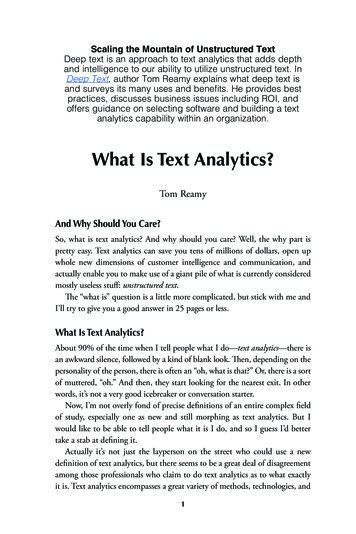
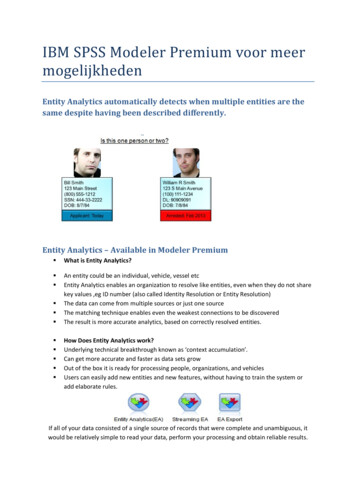
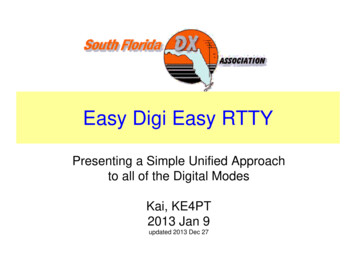



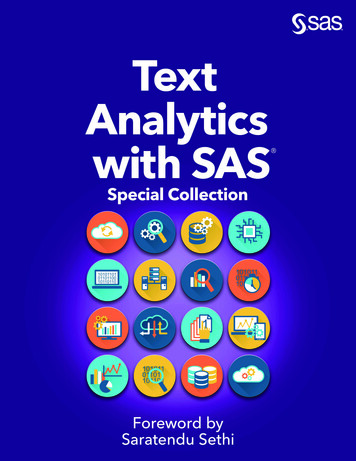
![[SURVEY PREVIEW MODE] DLIS SURVEY - fao](/img/19/dlis-questionnaire.jpg)
